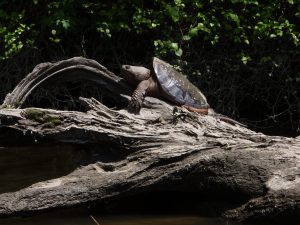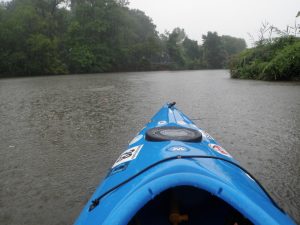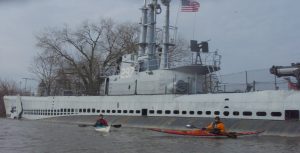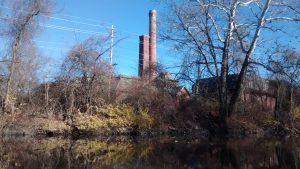Organized by Dr. Michael J Passow
Supported by the Robert and Catherine Murray Charitable Trust
10 Sep 2016
With support from the Robert and Catherine Murray Charitable Trust, we are developing a suite of educational resources to teach about the fascinating geologic and social history of the Hackensack Meadowlands and River in the Newark Lowlands. We combine written descriptions of the geologic history and historical development of the region with lesson plans, suggestions for field trips to representative locations, and forecasts for future impacts from rising sea level and climate changes.
This project is directly aimed at middle and high school Earth and Environmental Science teachers in Districts within the study area to create interesting learning activities. But another important goal is to provide a model for others to use their local river or other water body as the focus for developing interdisciplinary lessons.
View the Earth2Class web pages for this project



During this E2C Workshop, participants will work in small and large teams to explore the
Curriculum Materials and Project Suggestions


Selected Pertinent NGSS Performance Expectations and Disciplinary Core Ideas:
MS-ESS3-4
Construct an argument supported by evidence for how increases in human population and percapita consumption of natural resources impact Earth’s systems. [Clarification Statement: Examples of evidence include grade-appropriate databases on human populations and the rates of consumption of food and natural resources (such as freshwater, mineral, and energy). Examples of impacts can include changes to the appearance, composition, and structure of Earth’s systems as well as the rates at which they change. The consequences of increases in human populations and consumption of natural resources are described by science, but science does not make the decisions for the actions society takes.]
HS-ESS3-6
Use a computational representation to illustrate the relationships among Earth systems and how those relationships are being modified due to human activity. [Clarification Statement: Examples of Earth systems to be considered are the hydrosphere, atmosphere, cryosphere, geosphere, and/or biosphere. An example of the far-reaching impacts from a human activity is how an increase in atmospheric carbon dioxide results in an increase in photosynthetic biomass on land and an increase in ocean acidification, with resulting impacts on sea organism health and marine populations.


